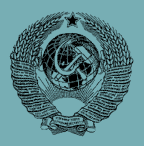New Russia
This exhibition is important for what it represents, what it contains, and what it suggests.

It represents a new Russia, willing and anxious under its first democratically elected president, Boris Yeltsin, to affirm the core democratic value of open access to information. Shortly after defeating the attempted coup of August 1991, a group from the victorious democratic resistance led by the chief archivist of Russia, Rudolph Pikhoia, took over the previously top secret archives of the Central Committee of the Communist Party and began the process of both consolidating democratic control over all archives in Russia and attempting to make them available for the first time for public study.
This exhibit, also shown in Moscow, is a milestone in this process — the first public display of the hitherto highly secret internal record of Soviet Communist rule. The legendary secretiveness and general inaccessibility of the entire Soviet archival system was maintained throughout the Gorbachev era. The willingness of the new Russian Archival Committee under Pikhoia to cooperate in preparing this exhibit with the Library of Congress dramatizes the break that a newly democratic Russia is attempting to make with the entire Soviet past. They are helping to turn material long used for one-sided political combat into material for shared historical investigation in the post-Cold War era.
Library of Congress
This exhibit is also remarkable for what it contains: the first significant number of documents ever shown anywhere from what may be the most important new source of primary materials for understanding the history of the twentieth century. These documents provide an unprecedented inside look at the workings of one of the largest, most powerful and long-lived political machines of the modern era. As in any modern archive, there is more bureaucratic verbiage and fewer instant revelations than one might hope for. But the documents that the Library of Congress has here chosen from the 500 made available from the Russian archives cover the entire range of Soviet history from the October Revolution of 1917 to the failed coup of August 1991. They include material from archives that had been key working files of the Communist rulers until August 1991: the archives of the Central Committee, the Presidential archive, and the KGB.
This exhibit illustrates both the domestic and the foreign policy of Soviet rule. The first section covers internal politics and aspects of Soviet reality that were hidden or falsified in official propaganda. These include the unannounced decisions and votes of the higher organs of the Communist Party, as well as the repressive activities of the Soviet security organs and various organs charged with controlling literary freedom and organized religion.
The second section, dedicated to Soviet-American relations, shows how those relations were conducted between governments, between the publics of the two countries, and between the Communist parties of the USSR and the USA. This section documents cooperative as well as confrontational periods in that relationship.
The material in the exhibit offers only a small suggestion of what the vast archives of the paper-intensive Soviet era may eventually reveal. The material suggests that totalitarian practices of terror and forced labor began earlier and more deliberately than have often been assumed. The ruthlessness, originality, and complexity documented in these records suggests bureaucratic dictatorship cut off from the people–and provides many hints of why Communist rule both lasted so long and fell apart so fast.
James H. Billington Librarian of Congress